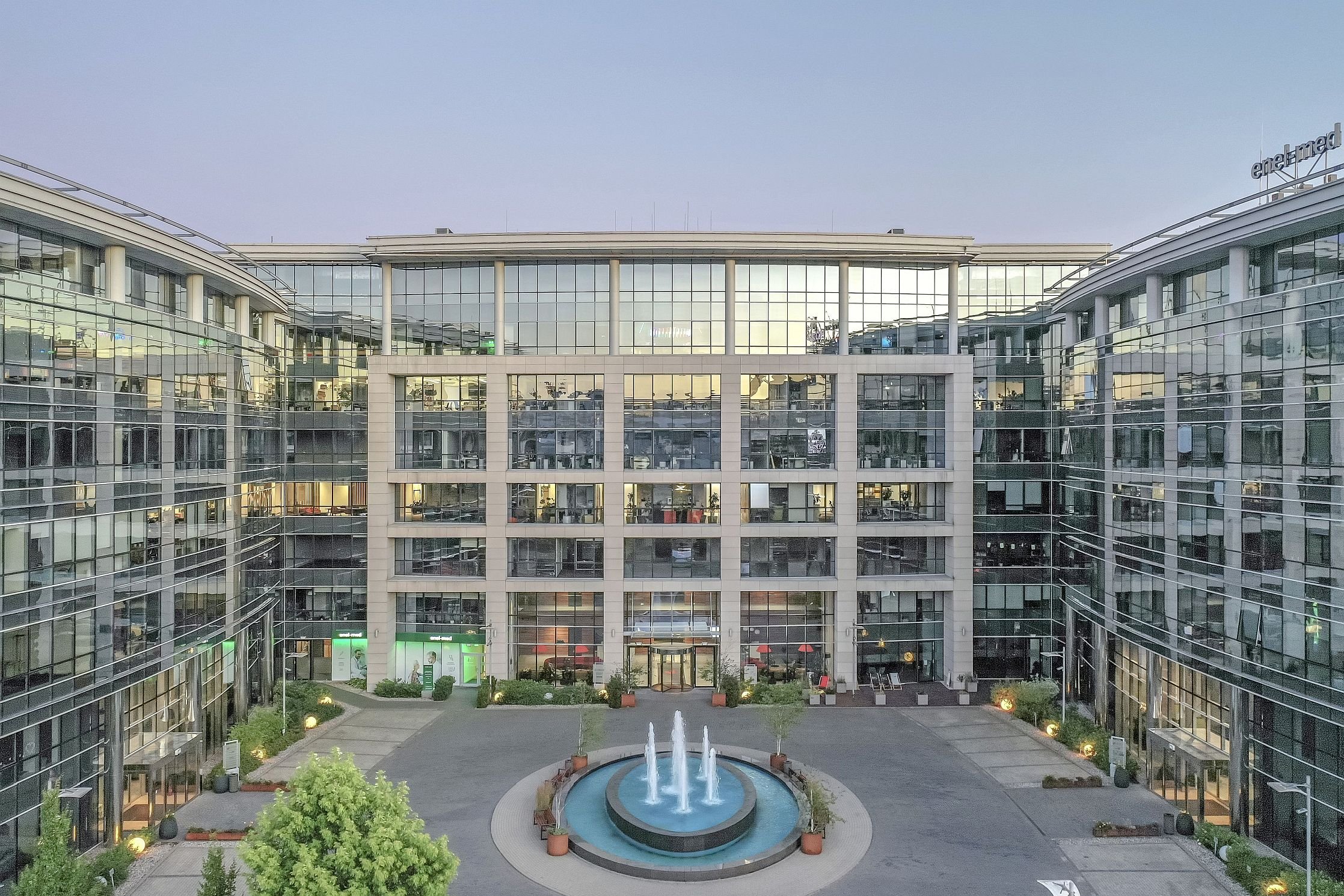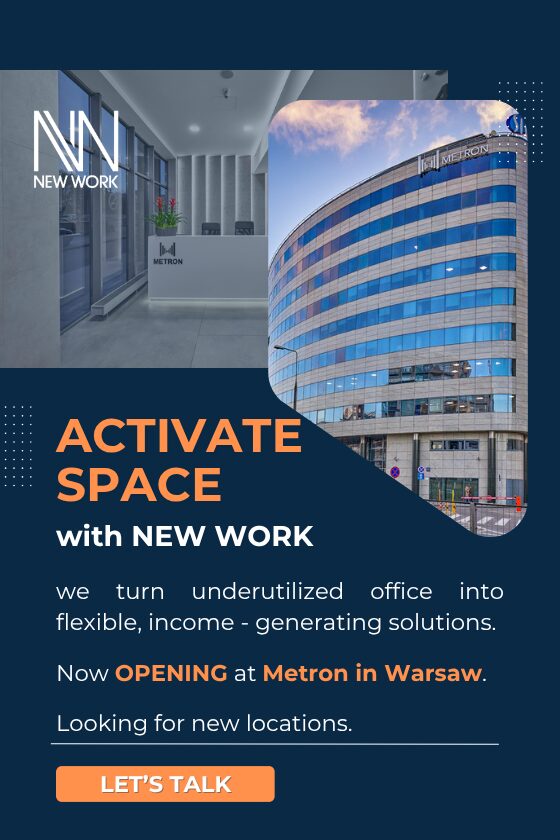A well-drafted lease not only protects tenants against unexpected expenses but also enables them to achieve tangible savings. Karol Wyka, Executive Board Director, Head of Office Department, Newmark Polska, talks about the role of advisors in an increasingly diverse real estate market.
How is the fairly widespread trend of space optimisation by tenants impacting office demand?
Karol Wyka, Newmark Polska: Today, the market standard is three in-office days and two work-from-home days, but employers are increasingly attempting to encourage workers to come into the office four days a week. Some companies signing new leases are choosing to optimise their offices by downsizing them by around 10 percent or more on average. Others are retaining their current office footprints. The office market appears to have reached a certain level of stabilization. This year’s total take-up is expected to rise to approximately 1.4 million sqm, which will be very close to the five-year annual average of 1.39 million sqm. It is encouraging to see that despite some companies downsizing their offices, certain sectors, such as cybersecurity and AI, are growing rapidly and need larger spaces.
What is changing is not only the volume of leased square metres but also the approach to leasing and lease types. Tenants grow at their own pace, depending on market conditions, and this process does not always follow a five-year timeframe. Those leasing large spaces of over 10,000 sqm typically explore the market for leasing opportunities well in advance. Generally, two or three years before a lease expires, companies prepare for at least two scenarios: renegotiation or relocation. This approach allows them to maintain a strong bargaining position and to select the best option.
Flexibility is now the buzzword, and landlords have also recognised this by offering not only typical leases but also ready-to-occupy offices fitted to one standard. Tenants can lease offices starting from 100 sqm for a minimum of six months. In contrast to serviced offices, those opting for these offices have to arrange their reception desk, if needed, as well as coffee for employees or equipment such as printers.
In the first nine months of this year, nearly half of the companies decided to extend their leases and remain in their current locations. What is behind their reluctance to relocate? Is it due to a lack of attractive market offers or is it more about tenants’ uncertainty regarding the future?
Renegotiations continue to account for a large share of take-up both in the capital and in regional markets but for completely different reasons. In Warsaw, subdued development activity in recent years has led to limited availability of high-quality office space in prime locations to which tenants might want to relocate. The vacancy rate in Class A office buildings in the centre of Warsaw is approximately 7 percent.
Regional cities present a different picture. In 2015-2021, these markets saw many new office completions, some of which remain unoccupied today, resulting in regional vacancy rates averaging more than 17%. The largest volumes of vacant office space are found in Kraków, Wrocław and Katowice. These are young markets, where most Class A office space is located in relatively new buildings, so tenants usually see no reason to move.
Warsaw stood out in the third quarter of 2024 with more than 38,000 sqm transacted under pre-lets. This pushed the share of new leases and pre-lets in the Polish capital up to 44 percent from 37 percent in the first half of the year and the proportion of renewals down from 51 percent in the first six months to 42 percent for the first three quarters.
How soon is the capital likely to become saturated with high-quality office space?
Developers are preparing new projects whose launch will depend on borrowing costs and investor activity. Demand for prime investment products is already growing and transactional activity is likely to be fuelled by further interest rate cuts from the European Central Bank.
Next year is expected to see more office completions than in recent years. The largest office buildings under construction in Warsaw are The Bridge (47,000 sqm), V-Tower (30,800 sqm, refurbishment), Upper One (36,000 sqm) and Office House (31,100 sqm) – the first phase of Towarowa 22.
Warsaw has a substantial stock of modern, high-quality office accommodation. Due to new EU regulations regarding ESG reporting, tenants issuing tenders for office space expect specific requirements related to greenhouse gas emissions and energy efficiency to be met. This is already encouraging developers to deliver green projects and driving owners of older buildings to upgrade them.
Companies have unlimited access to information, comparison websites and virtual tours of available offices. Do they still need advisors?
Frankly speaking, the more information you have, the more likely you are to be confused. While you can use available tools to quickly compare rents in various buildings, this is only one parameter and the easiest part of our job – a prelude to real negotiations. Tenants’ expenses are influenced not only by rent but also by service charges and a landlord’s fit-out contribution.
A few years ago, companies leasing office space focused mainly on the amount of rent, paying little attention to charges for common areas – at least during lease negotiations. This is changing. Tenants are now more aware of their rights and have been forced by tougher market conditions to economise on their budgets. Service charges represent a significant financial burden to tenants, as they average around 20-25 percent of the base rent.
However, to secure budget savings, you need to incorporate appropriate provisions and clauses into your lease before signing it.
Exactly. Imprecise terms or the absence of a closed list of items classified as shared costs may lead to abuses or overinterpretations in the future. Tenants must also understand that advance payments may differ significantly from the final charges determined at the end of the year. At that point, it will, however, be too late to address any issues – you will have to pay. This is why, to avoid high bills in the future, before signing a lease, it is advisable to include clear provisions specifying exactly what the tenant pays for and how costs will be settled.
What lease provisions would you focus on first?
I would certainly read the whole lease agreement very carefully. Buildings differ, so you need to be very cautious – this is where experience proves valuable. The first thing that comes to my mind is the legal status of the land the office building sits on. If the land is leased by the building owner, the lease agreement with the tenant will also include a provision on the perpetual usufruct fee which building owners always pass on to tenants. Perpetual usufruct fees vary based on land value – this is another variable in an Excel sheet. Tenants are also responsible for paying perpetual usufruct fees for their parking spaces in underground car parks. This is particularly relevant to environmentally conscious companies that prefer greener commuting options but have leased, for example, half of a building but do not use all their parking spaces.
Another important matter for tenants is protection against sudden increases in service charges. Caps on service charge growth, either by a fixed amount or a percentage, serve this purpose.
You previously mentioned a fit-out budget. Won’t an Excel sheet be enough in this case?
No, unfortunately, it won’t. This is because there are no universal market standards for calculating a landlord’s office fit-out contributions. Even the method used to calculate space for fit-out can result in costs being up to 15 percent higher in some buildings than in others. There are two common market practices: either the net area, also known as the carpet area, which is exclusively occupied by the tenant, or the gross area, which includes an add-on factor, is used in the calculations. As a result, we end up comparing apples with oranges, which ultimately shows that a rate of €900 per sqm may offer a better deal than €1,100 for the same number of leased square metres.
Another example is the scope of work that has already been completed. Landlords provide shell & core spaces with essential structural elements. However, in practice, shell & core standards can differ, ultimately impacting fit-out costs. Some developers deliver spaces with raised floors installed and with required glazing and glass doors which represent significant items in fit-out budgets.
Such differing approaches to landlords’ office fit-out contributions significantly hinder comparisons. It is easy to get confused. This is why, in a complicated and diverse market, even a good Excel tool will not suffice. What is needed is an experienced advisor who has brokered hundreds of leases and is aware of various market practices and legal loopholes. At the end of the day, a good advisor will bring several selected offers down to a common denominator, allowing for a true comparison of apples with apples.







